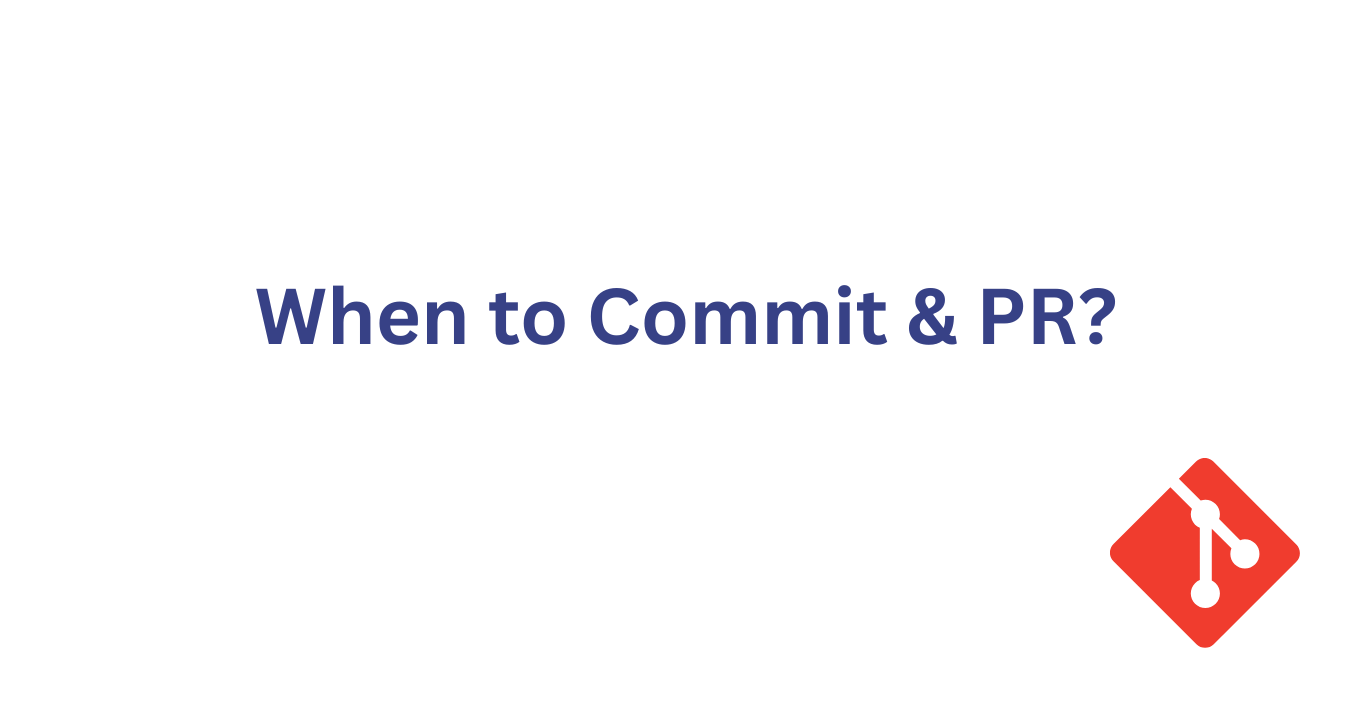When to Commit & PR: A Developer's Guide
Version control is a tool for humans first and computers second. The best patterns are those that help your team collaborate effectively.
One of the most common questions developers face isn’t about complex algorithms or debugging techniques—it’s about workflow: “How often should I commit my code, and when should I create pull requests?” Whether you’re new to version control or looking to refine your process, this guide will help you establish a healthy Git rhythm.
What Is the Goal?
There’s no universal rule for commit and PR frequency. The goal is maintaining a rhythm that:
- Easier code reviews - Small, focused commits make it easier for reviewers to understand the changes, spot issues, and provide meaningful feedback.
- Better debugging and troubleshooting - When something breaks, bisecting or tracing through small, logical commits makes it much easier to identify exactly where a problem was introduced.
- Clearer project history - Well-structured commits create a meaningful history that documents how and why the code evolved, serving as living documentation.
- Simplified rollbacks - If a problem is discovered, you can roll back specific changes without affecting unrelated work.
- Easier merging - Smaller, focused changes reduce merge conflicts and make them easier to resolve when they do occur.
- Improved continuous integration - Focused commits make it easier to determine which specific change caused a test to fail.
- Better collaboration - Clear commit messages and focused changes make it easier for team members to understand each other’s work.
- Enhanced discoverability - Good commit messages make it easier to search the project history to find when particular changes were made.
- Facilitated code ownership - When commits are organized by logical units, it’s easier to attribute specific components or features to their owners.
- Smoother releases - Clean, well-structured commits make it easier to cherry-pick specific changes for hotfixes or feature releases.
For Commits
- Commit whenever you complete a logical unit of work that leaves the code in a working state
- Generally this means committing several times per day
- Each commit should represent one coherent change (e.g., “Add user authentication”, “Fix navigation bug”)
- Avoid going too long without committing as this makes it harder to track changes and increases risk of losing work
For Pull Requests
- Create a PR when you have a complete, reviewable feature or fix
- The PR should tell a clear story about what changed and why
- Typically this means every few days or when a user story/task is complete
- Keep PRs focused and reasonably sized (a few hundred lines of code is often a good target)
- Very large PRs (1000+ lines) become difficult to review effectively
Some Signs You Should Probably Create a PR:
- You’ve completed a distinct piece of functionality
- Your changes have grown to more than a day’s worth of work
- The changes are starting to touch multiple areas of the codebase
- You want early feedback on your approach
Remember that these are guidelines rather than strict rules - the right frequency depends on your team’s workflow, the type of changes, and your project’s needs. What’s most important is maintaining a good rhythm that works for your team while keeping changes reviewable and manageable.
